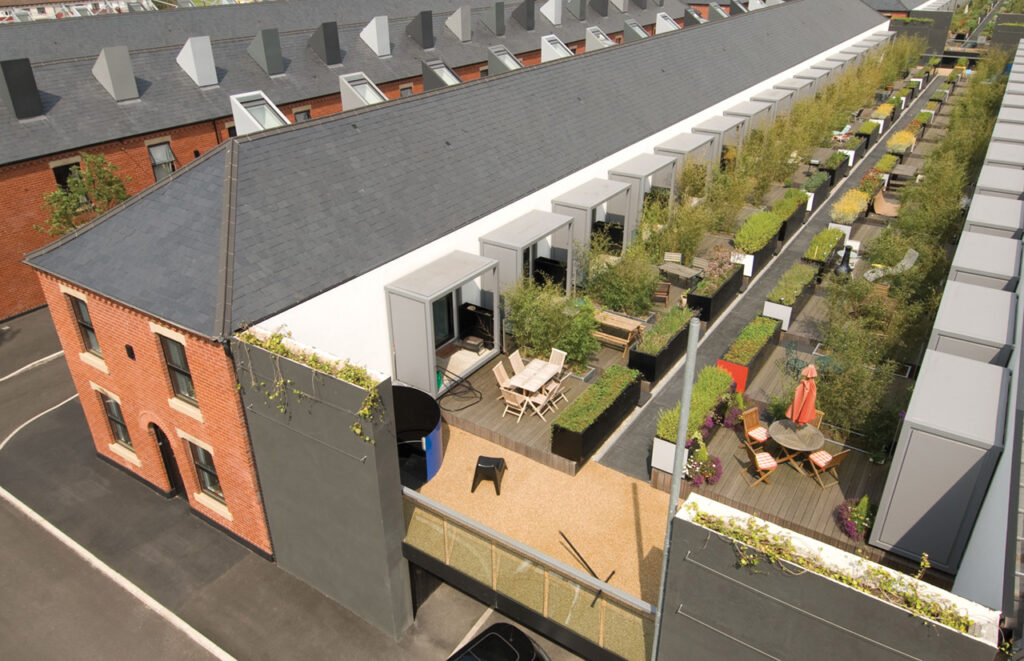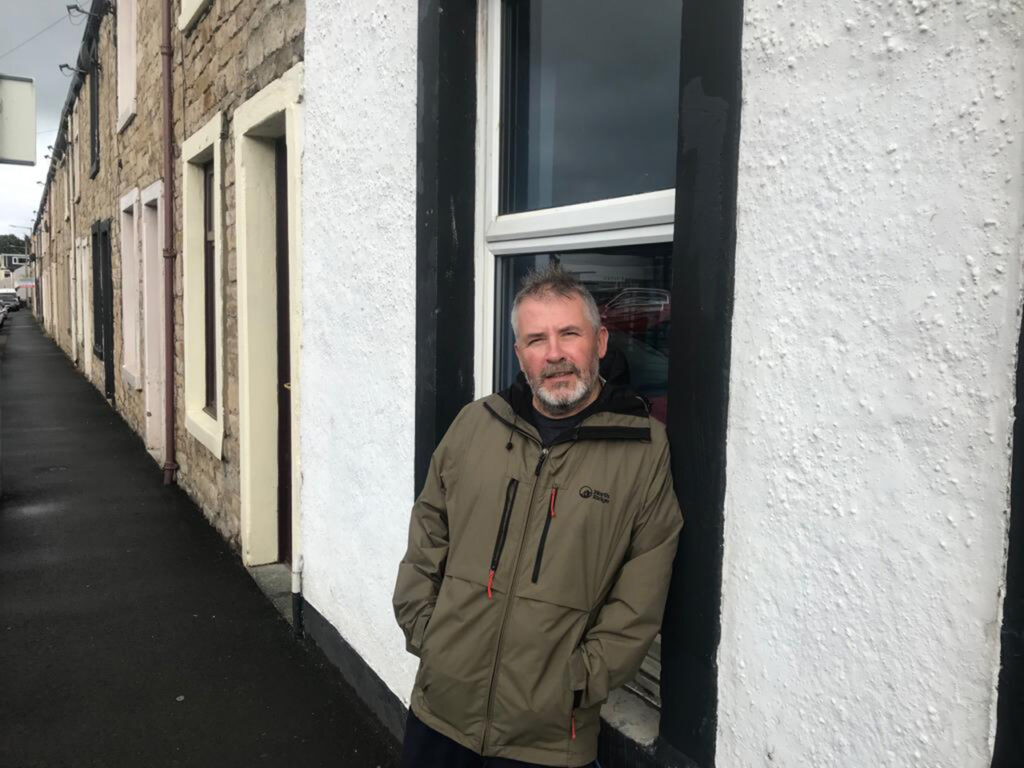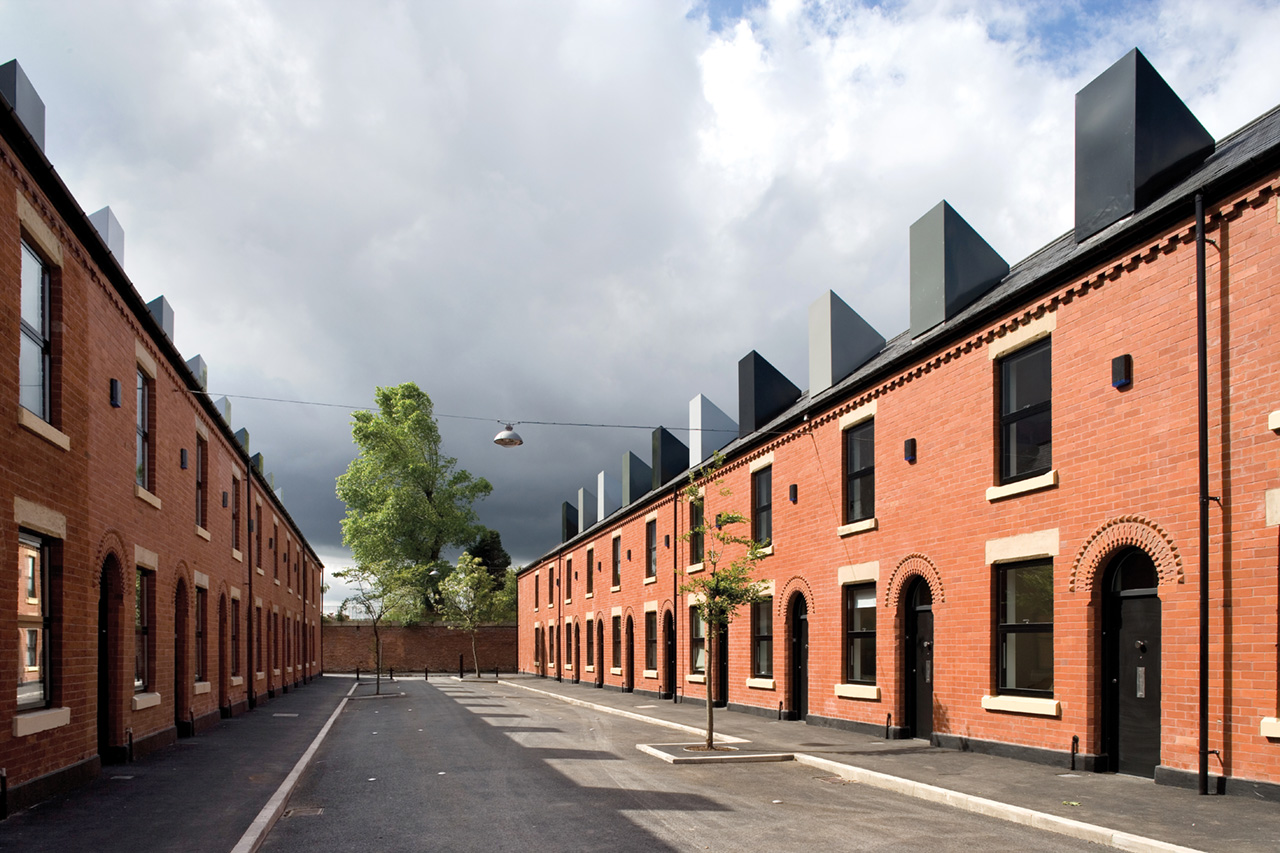Back-to-back to the future
Sustainable, sociable, safe and stylish, the terraced house could help us build a better future, if only the big builders weren’t obsessed with beige family homes
You could blame Coronation Street for the demise of the Victorian terrace. In its early iterations, the opening titles showed the sun-less tops of serried houses, overloomed by tower blocks, smoke belching from chimneys. It was the Swinging Sixties but in Weatherfield it might have been the 1860s. That the street was terraced was fundamental to the plot lines of nosey neighbours, cut-price hopes and escaping to the Rovers Return to air your grievances.
“I feel safe in my terrace. Regular front doors and windows overlooking the street provide natural surveillance.”
My mum loved the serial but – like the Peter Kay joke – she wanted a bungalow. Ours, in Burtonwood, near St Helens, faced a row of Victorian terraces. They were tall, dark and, I thought, handsome. But all around, maze-like estates were sprouting, with Closes, Drives and Ends. People wanted Brookside living: cul de sacs and car ports.
Scroll on through the decades and a few other soaps, dead and alive, and we’re in the age of the beige detached house on a ribbon development – three bedrooms with three en suites, a walled-in lawn, a drive for four cars, and a fine view of an A-road. Dreary, duplicitous (detached? call that a garden?) and anti-social. Offers above £450,000, please.
What went wrong? It can’t all have been Hilda Ogden’s fault.
Governments and local authorities rarely draw a line between the housing crisis, which sometimes feels as old as Corrie, and the kinds of houses – the “typology”, in architects’ jargon – that we live in. But you only have to visit an area of terraced houses – most of Hebden Bridge, Saltaire, the Peel Park side of Accrington – to be struck by the pleasing aesthetics of the buildings, the tidy grid of streets, the density, the designed-in communality.
Is this mere nostalgia? A learned over-appreciation of time-worn properties? Or does the humble terrace still have something to offer in the 21st century?
“Terraces are robust, adaptable and flexible,” says Catherine Dewar, climate change programme director at Historic England. “They can be scaled up, as for instance the very fine townhouses in Liverpool’s Georgian Quarter, or scaled down to form small workers’ cottages. They reflect a local vernacular style, as each locality used bricks made with local clays, and other architectural features were bought from a common catalogue so you can read the different developer in the front elevation.”
Her affection for terraces is personal as well as professional.
“I feel safe in my terrace. Regular front doors and windows overlooking the street provide natural surveillance, or ‘eyes on the street’ as [American-Canadian urbanist] Jane Jacobs puts it. It’s the opposite of some estates of detached houses where people live behind high walls and behind high gates, just leaving the house to get in their car.”
Safety for children and those with disabilities is another major consideration.
“Well-designed places have legible streets so you can orientate yourself,” says Dewar. “Regular front doors mean you have more activity of people coming and going, which creates safer streets. The tight corners on terrace streets forces vehicles to slow down.”
But in the 1970s and 1980s, the form deteriorated. I recall how Warrington and Merseyside filled with orange-walled Lego-land estates. Where Victorian terraces had elegant exteriors and mouldings in the parlour, modern versions were stripped of all detail.
But the main reason they fell out of favour was the bottom line. Developers can charge more for semis and much more for detached houses, even if the gap between properties is thinner than a ginnel. The implosion of public transport that came hand in hand with the suburbanisation of town life created a self-perpetuating cycle of ever more car-dependent living.
Some architects and town planners tried to reverse the trend. The 350 two-up, two-down terraces of Chimney Pot Park in Langworthy, Salford are not new, but they look it. Crime and neglect had driven down the price of the district’s terraced houses to around £8,000 in 1999 – but no one wanted to live there. The council earmarked the area for demolition, until a redevelopment project was proposed by Urban Splash and Shedkm, an architectural practice with studios in Liverpool and London.
“We were given the opportunity to regenerate them en masse,” says Ian Killick, director of Shedkm – who lives in an 1890 terrace in Hoylake. “That was key – as we could work on a whole area rather than a single house, so were able to keep the high street. Terraces can provide a reasonable amount of density to support local businesses.
“They can also be repaired and renewed. We put the bedrooms on the ground floor and the living and dining rooms upstairs. The kitchen was either on the same floor or above it in a mezzanine near the roof.”
Visit the area today and the frontage is little changed except for a quirky skylight appendage. A lot of the redesign, which has scooped multiple awards, is hidden from view. Secure car parking is inserted in the former back alley and each house has a private garden area and planters – yet an open feel aimed at promoting a sense of community. All of this has been possible without enlarging the footprint of the terrace.
“You would fit half or less the number of modern-style houses into the same area,” says Killick.
Yet time and again, old but solid terraces have been razed in the North, sometimes because of ill thought-out regeneration schemes, sometimes because refurbishment was considered too problematic or costly. Housing Market Renewal, also known as Pathfinder, from the 2000s – the last large-scale housing regeneration scheme – had the accent firmly on demolition and new build, rather than preservation*.
“Refurbishment is often more expensive than new builds, because VAT is payable on the former but not the latter,” says Killick. “There have been a number of campaigns since the 1990s calling for a level playing field, but no government has grasped the issue. Refurbishing fits into the retrofitting idea, which does not waste the embodied carbon in existing structures.”
We often associate terraces with the North and the Victorian era. But they have been around since the 17th century and in many southern cities are very common – and very des-res. In London, terraced houses are much prized.

“Seventy per cent of the buildings in London are houses,” says Peter Barber of King’s Cross-based Peter Barber Architects. “I presume the same goes for Manchester or Leeds or Liverpool.
“Our houses are our cities and terraced houses make for better cities as they provide better, more sociable housing than blocks of flats. People share the circulation space of a street rather than of a lift or a landing.
“A terraced city tends to be a more walkable city. People become much less reliant on a car. Terraces can support local shops. Everything – vets, GPs, schools – can be much closer. Dense housing supports public transport. I love them. I live in one in Brighton. Down here in the South, it’s a new era for the terrace. It’s everyone’s aspiration to live in one.”
In 2020, Barber’s studio built six terraces of brick housing in Charlton, south London, for Greenwich Council-owned developer Meridian Home Start. The development, Sandpit Place, contains 32 homes in three rows of back-to-back terraced houses. Like the studio’s nearby Rochester Way project – 29 courtyard/terrace hybrid houses – the homes were made available to those working locally at discounted rents.
On McGrath Road in East London, Barber built 26 radical-looking “little tower houses” that meld the terrace concept with the mews house.
“The main criticisms of back to backs were sanitation – as in shared toilets – and a lack of air and light,” he says. “So when we built these back to backs for shared ownership for the London borough of Newham, we added private bathrooms, but we also added a private roof terrace with its outlook rotated so that each home was dual aspect and enjoyed cross-ventilation.”
Planners, he says, often forget to talk to residents. “In Birmingham, just six terraced houses – out of 60,000– were saved as a back-to-back museum. I went there in January and thought they worked beautifully. I was shown around by a couple of ex-back-to-back dwellers who had lived a street or two away. They had been kicked out in the slum clearances of the 1960s and rehoused in suburban tower blocks – which have now also been demolished. They both spoke fondly of growing up there.
“Living in a terrace you have to be tolerant of other people, which is something we have been in danger of losing. During the pandemic, we all learned to live alongside one another again and, for me at least, that aspect was a positive experience.”
With energy bills soaring and the importance of cutting carbon emissions, terraced houses use fewer materials and occupy less space. They share heat with neighbours and are better protected from wind.
“Terraced houses have fewer outside walls and in back-to-back housing you have an even better ratio of external walls to floor space,” says Barber. “They use less energy and waste less heat.”
Being sheltered and keeping warm are necessities. But experts and residents value equally the human factor – the way a terraced house creates conviviality and communal responsibility.
“Have you seen how people put their potted plants on the pavement?” says Barber. “I like the way terraced houses spill on to the street. I’m no royalist but we had a street party for the jubilee and it was fantastic. When you have a defined space that is shared, it’s much easier to have dancing, music and socialising.
“The cul de sac is the enemy of social integration and cohesion, and life on modern estates tends to be divided and atomised. One of the great things about my terraced street is that it belongs to residents but also to anyone who happens to come through, to strangers. Everybody is welcome.”

Nick Burton, Clitheroe
I have lived in this terraced house in Clitheroe for 15 years. There are never any worries about being robbed when away as neighbours spot and hear everything.
My next-door neighbour was born in her house and she is now in her fifties. She knows the complete history of our house and its occupants – including letting us know of the dog buried in the back yard!
Neighbours still knock on the door asking for things such as a tin opener. Our neighbour passes us fresh veg from his allotment over the backyard wall.
The terraced row was built for a mill around 1905, which is still in use as a clothing factory – a bit like Baldwin’s Casuals in Coronation Street. We see workers crossing the street from where they live and going into work – no commute.
Not much different from the early 1970s when we lived in a terraced street in Broughton, Salford. Those streets were gradually cleared as slums – they had outside toilets – and we used to play on the derelict sites. In Salford we had a chippy at one end and a corner shop at the other.
We let the next door neighbour have a spare key to our house. This has come in useful on a few occasions when we have locked ourselves out.

Leave a reply
Your email address will not be published.